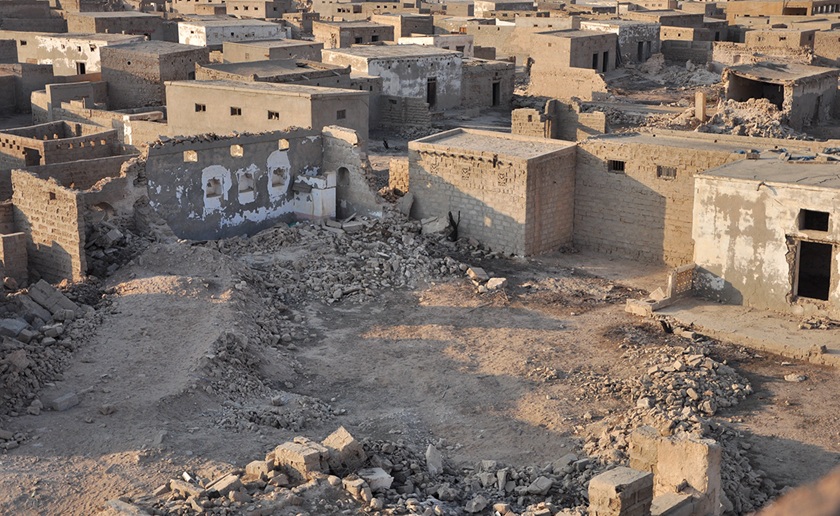What Is a Property Snagging Report and Why You Need It Before Move-In
Wednesday, 23 April 2025
Buying a new property is a major milestone—especially in a dynamic market like Dubai where high-rise living and luxury villas are the norm. But before you sign the final papers and move into your new home, there’s one critical step many buyers overlook: the property snagging report.
A snagging report is more than just a checklist—it’s your safety net, ensuring that your investment meets quality standards and is truly move-in ready. In this blog, we’ll explain what a snagging report is, why it’s essential for buyers in Dubai, and how it protects you from costly repairs down the line.
Table of Contents
- What Is a Property Snagging Report?
- What’s the Process?
- What Does a Snagging Report Cover?
- Who Needs a Snagging Report?
- Who Should Conduct the Snagging?
- Frequently asked questions
What Is a Property Snagging Report?
A snagging report is a detailed inspection that highlights defects, incomplete finishes, or construction errors in a newly built or renovated property. These issues—known as “snags”—can range from minor cosmetic faults like chipped paint or uneven grouting to more serious concerns like plumbing leaks or unsafe electrical installations.
Snagging is typically done before the property handover, giving the developer a chance to fix any problems at their expense—before you move in.
Why You Need a Snagging Report Before Moving In
While a brand-new property may look perfect on the surface, underlying issues are more common than you might expect. A snagging report ensures your home is ready for occupancy and meets the promised standards. Here’s why it’s essential:
Financial Savings
Early identification of defects means they can be fixed under the Defect Liability Period (DLP)—at no cost to you. This avoids out-of-pocket repair costs that can add up quickly post-handover.
Ensures Safety
Snagging inspections help uncover potential safety hazards like faulty wiring, unstable tiles, missing fire safety equipment, or gas leak risks. Addressing these before moving in ensures your family’s safety.
Quality Assurance
A snagging inspection guarantees the property matches the quality promised by the developer. It holds the construction team accountable for their work and helps uphold industry standards.
Legal Protection
A professionally prepared snagging report serves as a formal document. It can be used as evidence if disputes arise regarding the condition or completion of the property.
What’s the Process?
The snagging process is methodical and thorough, typically carried out by specialized snagging companies. Here’s how it works:
1. Inspection
Trained inspectors carry out a full assessment of the property, from surface-level finishes to structural, electrical, plumbing, and HVAC systems.
2. Defect Identification
Every defect—whether it’s cosmetic or functional—is logged. Issues like poor paintwork, leaking taps, broken AC units, or misaligned doors are all documented.
3. Reporting
The snagging company creates a comprehensive report, often supported by images, measurements, and recommendations. This report is shared with the developer for review.
4. Rectification
The developer is expected to resolve the listed issues before the property handover takes place. This ensures you receive a fully finished, defect-free home.
5. Final Inspection (De-Snagging)

Once the developer claims all issues are fixed, a de-snagging inspection is performed to ensure the work is properly completed. This final step confirms that the property is truly move-in ready.
What Does a Snagging Report Cover?
Snagging covers almost every aspect of your property. Key areas inspected include:
- Walls and ceilings: Cracks, paint quality, alignment
- Plumbing systems: Leaks, pressure, drainage
- Electrical fittings: Socket and switch functionality, lighting
- Windows and doors: Proper fitting, locking mechanisms
- HVAC systems: Functionality, vent placement
- Kitchens and bathrooms: Fixtures, fittings, and water flow
- Appliances: Built-in appliance testing
- Balconies and external areas: Railing safety, drainage issues
Who Needs a Snagging Report?
While it’s most common with new builds, snagging reports are useful for:
- Buyers of off-plan properties nearing completion
- Owners of recently renovated units
- Investors renting out furnished or upgraded homes
- Buyers of resale properties where quality needs verification
Who Should Conduct the Snagging?
Always hire a professional snagging company in Dubai. These experts understand local building codes, construction standards, and common defects. When choosing one, make sure they are:
- RERA-registered
- Well-reviewed and recommended
- Transparent about their inspection checklist
- Able to provide follow-up support if needed
A property snagging report is one of the smartest moves you can make before moving into your new home in Dubai. It ensures you get what you paid for—without hidden surprises. From saving money to ensuring safety and peace of mind, snagging puts the power back in the buyer’s hands.
Frequently Asked Questions (FAQs)
What is a property snagging report?
A property snagging report is a detailed inspection document that lists defects or unfinished work in a new or recently renovated property. It ensures the developer addresses these issues before handover.
Why is snagging important before moving in?
Snagging helps identify defects early, ensuring the property is safe, functional, and finished to a high standard. It also protects buyers from paying out-of-pocket for repairs that should be covered by the developer.
Who should carry out a snagging inspection?
It’s best to hire a professional snagging company in Dubai. These experts are trained to spot defects that might be missed by the untrained eye and ensure compliance with local building regulations.
What types of issues are commonly found during snagging?
Common snags include cracked tiles, peeling paint, leaking pipes, loose electrical fittings, malfunctioning AC units, and safety concerns like faulty fire systems.
When should I schedule a snagging inspection?
Ideally, the inspection should be done just before the property handover, but before signing any final acceptance documents. This gives the developer time to correct any issues.
Is snagging necessary for off-plan or secondary properties?
Yes. While it’s most common for off-plan handovers, snagging is equally valuable for secondary or recently renovated properties to ensure quality and prevent future issues.
What is de-snagging?
De-snagging is the follow-up inspection done after the developer claims all initial snags have been fixed. It verifies that the property is now in acceptable condition.
Can I do the snagging myself?
While it’s possible, it’s not recommended unless you have construction expertise. A professional snagging company has the tools and experience to provide a comprehensive inspection.
Will the developer fix the snags found?
Yes, if the issues are reported during the Defect Liability Period (DLP), the developer is usually obligated to fix them at no cost to the buyer.
How much does a property snagging inspection cost in Dubai?
Costs vary depending on property size and the company you choose. On average, prices start from AED 1,000 for smaller units and increase for villas or larger apartments.





